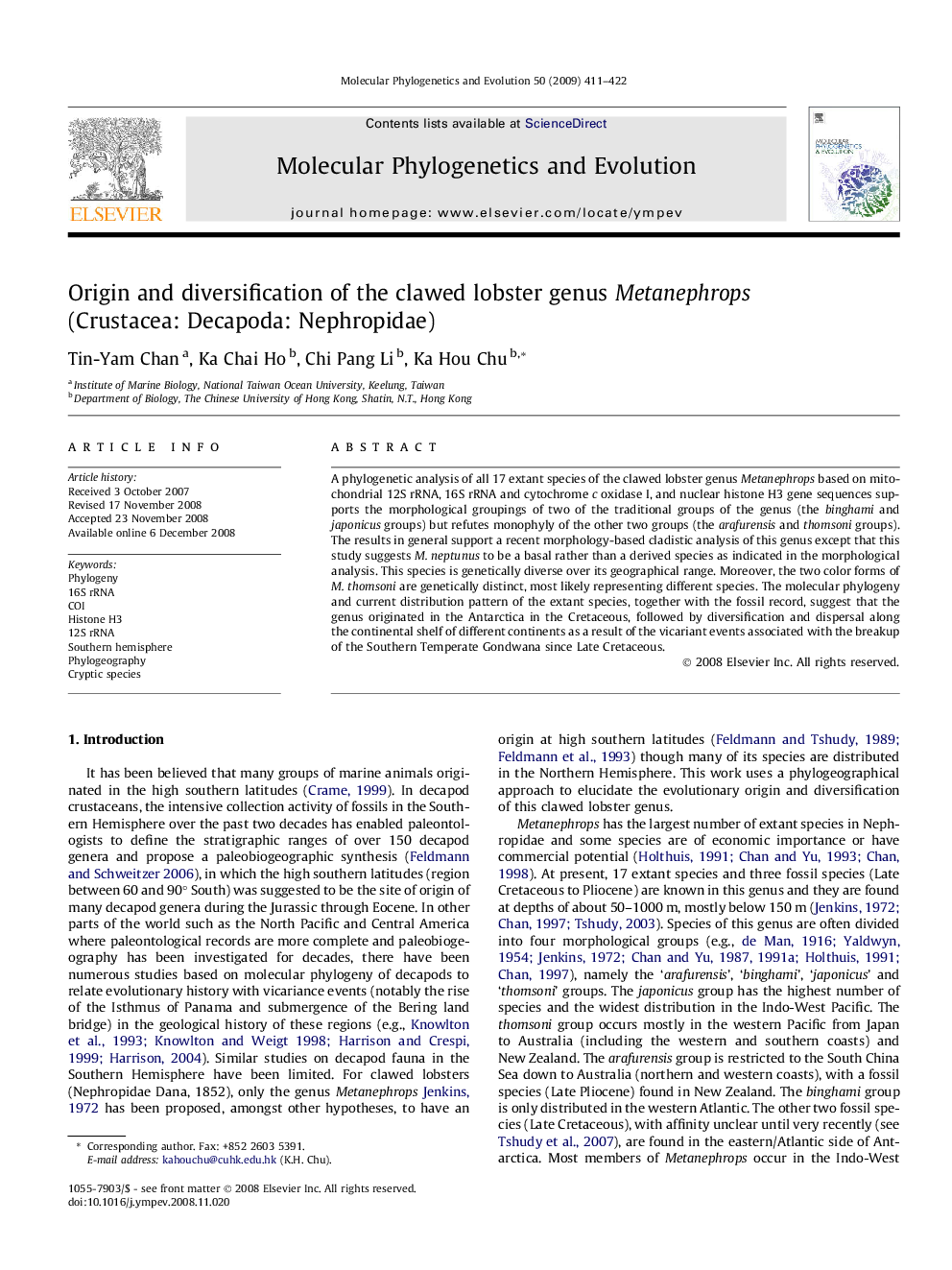| Article ID | Journal | Published Year | Pages | File Type |
|---|---|---|---|---|
| 2834473 | Molecular Phylogenetics and Evolution | 2009 | 12 Pages |
A phylogenetic analysis of all 17 extant species of the clawed lobster genus Metanephrops based on mitochondrial 12S rRNA, 16S rRNA and cytochrome c oxidase I, and nuclear histone H3 gene sequences supports the morphological groupings of two of the traditional groups of the genus (the binghami and japonicus groups) but refutes monophyly of the other two groups (the arafurensis and thomsoni groups). The results in general support a recent morphology-based cladistic analysis of this genus except that this study suggests M. neptunus to be a basal rather than a derived species as indicated in the morphological analysis. This species is genetically diverse over its geographical range. Moreover, the two color forms of M. thomsoni are genetically distinct, most likely representing different species. The molecular phylogeny and current distribution pattern of the extant species, together with the fossil record, suggest that the genus originated in the Antarctica in the Cretaceous, followed by diversification and dispersal along the continental shelf of different continents as a result of the vicariant events associated with the breakup of the Southern Temperate Gondwana since Late Cretaceous.
